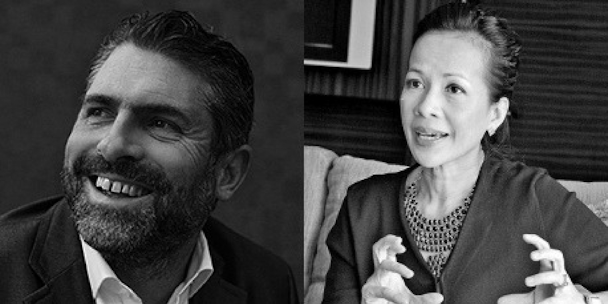Asia Pacific pays a price for gender inequality, says TBWA and Microsoft
On International Women’s Day, TBWA\Asia and Microsoft join to call on the industry to rethink gender inequality in Asia. In a co-written piece, by Microsoft's Dr. Astrid S. Tuminez and TBWA's Philip Brett, they ask the industry to understand local nuance in order to empower Asia’s women to fuel innovation, growth and fill the talent gap.

Microsoft's Dr. Astrid S. Tuminez and TBWA's Philip Brett on gender equality in Asia
Many organisations in Asia-Pacific report that they face a talent gap—i.e., they cannot find the right talent to fill job openings. This is a sorry state of affairs. After all, Asia Pacific countries, especially the emerging markets, have experienced unprecedented economic growth in the past three decades. In the decade from 2000-2010 alone, the emerging markets of Asia generated nearly 54% of world GDP growth. With new affluence, Asia’s talent pool has increased in size, level of education and health. It thus appears counterintuitive that organisations still face a dearth of talent.
The answer to the problem may lie in Asia’s women. As Asia has become more affluent, women’s education and health have improved. They are entering the labour force in larger numbers, but, in many countries, women’s dropout rates in middle management are high. This is in despite of organisations investing resources in programmes and training to address “diversity and inclusion,” gaps in female representation persist, especially at top levels of the organisational hierarchy. This is true even of the most developed countries in Asia, including Japan, Korea and Singapore.
Numerous studies have shown that gender and other types of diversity drive sustained innovation, problem-solving, and creativity. Gender equality, in particular, has been repeatedly correlated to higher profitability, improved risk-taking, and better return on equity. Countries with greater gender equality are also poised for more equitable development across the board. If integrating more women into leadership positions and other types of representation can lead to many shared positive outcomes, why is it that we continue to see a great disparity in leadership among men and women in Asia? What fundamental issues prevent women in Asia from getting ahead in greater numbers and in a more sustainable fashion?
In Asia, sticky cultural factors are arguably the most powerful obstacles in women’s pathways to leadership. While girls have greater access now to education and to entry-level jobs, their pathway to the top is vastly more complicated than it is for their male counterparts. Many studies report the existence of latent bias in the workplace; the lack of family support for working women; various kinds of disapproval and stigmatization for ambitious and capable female talent; lack of support for working mothers, including childcare and parental leave; and overly macho work cultures (e.g., late hours and drinking).
Deeply entrenched gender stereotypes and cultural norms and values hamper the advancement of women to leadership positions in Asia. Those who do advance to the very top in politics and business often do so because of family or dynastic connections. And even though education is improving and more women are pursuing tertiary and graduate education across the Asian region, only a small percentage of these highly educated females become CEOs or managing directors. Indeed, across Asia Pacific, 14% of women who enroll in tertiary education never even enter the workforce.
The communication industry in Asia Pacific reflects the same gender gap found in other industries. As a sector, communication prides itself on its insight into, and understanding of, modern culture, but it has found itself - and its leaders - in the firing line of controversy in its response (or lack of) to closing the gender gap and building a more inclusive working environment where women and men can thrive equally. The industry does, in fact, have highly creative and inspiring female talent. But their drop-off at senior levels, especially in the creative department, is sharp. This has created the perception that the agency world is stuck in the 1950’s (“Mad Men,” anyone?). But is the industry in Asia really stuck? How can industry leaders help overcome social and cultural factors, along with industry biases, in order to build a more diverse, inclusive and sustainable leadership pipeline?
To tackle ingrained cultural and social pressures, the focus for industry, especially when operating across markets, is to understand deep-rooted perceptions and attitudes at the local level. Despite global operating procedures and policy, local behavior, cultural norms and values will prevail. It is vital that an open and transparent discussion of these norms take place in, and across, organisations.
But talk is not enough. Senior leaders and managers must invest resources and effort to deliberately cultivate, reward, and retain female talent. Critical attention is required especially during the child-bearing years for women. Progress must be measured. This is not a do-gooding project, but an actual strategic business imperative. Change must be driven from the very top of the organisation, and integrated across all levels, in all countries of operation. Leadership teams who develop an adept understanding of how their teams work - at their most local level - will be better equipped to help remove unconscious biases, change attitudes, and set their female talent - who have the ambition, passion and capabilities – on the pathway to rise to the very top.
Dr. Astrid S. Tuminez is regional director of corporate, external and legal affairs, Southeast Asia at Microsoft and Philip Brett is president of TBWA\Asia.
